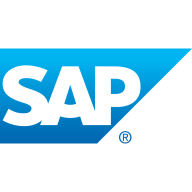

Teradata and SAP Business Warehouse are two prominent competitors in the data warehousing domain. Teradata holds an edge due to its capability to handle vast data volumes effectively, while SAP Business Warehouse stands out for seamless SAP ERP integration and real-time capabilities.
Features: Teradata offers fast query execution, scalability through parallel architecture, and robust security. Its adaptability and workload management make it suitable for handling large data volumes. SAP Business Warehouse, however, excels in seamless integration with SAP ERP, real-time data acquisition, and efficient data transformation processes.
Room for Improvement: Teradata could enhance transaction processing capabilities, improve cloud readiness, and refine usability in SQL functionalities. Its pricing and compatibility with big data platforms are also areas of concern. SAP Business Warehouse needs better data cleansing, more intuitive user interfaces, and improved integration with non-SAP tools. Users also seek enhancements in flexibility and reporting functionalities.
Ease of Deployment and Customer Service: Teradata provides versatile deployment options across on-premises, cloud, and hybrid environments, though cloud transitions can be complex. Its technical support is generally excellent but occasionally lacks in response times. SAP Business Warehouse offers flexibility in deployment but sometimes falls short in user support, with calls for enhanced integration guidance and customer service.
Pricing and ROI: Teradata is perceived as expensive but offers strong performance value for large projects. Its pricing models are evolving, but costs remain high, appealing more to large enterprises. SAP Business Warehouse also has high pricing with complex licensing tied to company revenue, limiting accessibility for smaller companies. Both solutions promise good ROI in performance and satisfaction, but Teradata provides a clearer cost-benefit value, while SAP's strength lies in its broader SAP ecosystem integration.
| Product | Market Share (%) |
|---|---|
| Teradata | 8.5% |
| SAP Business Warehouse | 2.1% |
| Other | 89.4% |


| Company Size | Count |
|---|---|
| Small Business | 8 |
| Midsize Enterprise | 4 |
| Large Enterprise | 15 |
| Company Size | Count |
|---|---|
| Small Business | 26 |
| Midsize Enterprise | 12 |
| Large Enterprise | 50 |
Reporting, analysis and interpretation of business data are crucial to preserve and enhance the competitive edge of companies by optimizing processes and enabling them to react quickly and in line with market needs. SAP Business Warehouse (SAP BW) provides tools and functions that enable companies to attain these goals. In SAP BW, you can integrate, transform, and consolidate relevant business information from productive SAP applications and external data sources. SAP BW provides you with a high-performance infrastructure that helps you evaluate and interpret data. Decision makers can make well-founded decisions and identify target-orientated activities on the basis of the analyzed data.
Teradata is a powerful tool for handling substantial data volumes with its parallel processing architecture, supporting both cloud and on-premise environments efficiently. It offers impressive capabilities for fast query processing, data integration, and real-time reporting, making it suitable for diverse industrial applications.
Known for its robust parallel processing capabilities, Teradata effectively manages large datasets and provides adaptable deployment across cloud and on-premise setups. It enhances performance and scalability with features like advanced query tuning, workload management, and strong security. Users appreciate its ease of use and automation features which support real-time data reporting. The optimizer and intelligent partitioning help improve query speed and efficiency, while multi-temperature data management optimizes data handling.
What are the key features of Teradata?In the finance, retail, and government sectors, Teradata is employed for data warehousing, business intelligence, and analytical processing. It handles vast datasets for activities like customer behavior modeling and enterprise data integration. Supporting efficient reporting and analytics, Teradata enhances data storage and processing, whether deployed on-premise or on cloud platforms.
We monitor all Cloud Data Warehouse reviews to prevent fraudulent reviews and keep review quality high. We do not post reviews by company employees or direct competitors. We validate each review for authenticity via cross-reference with LinkedIn, and personal follow-up with the reviewer when necessary.